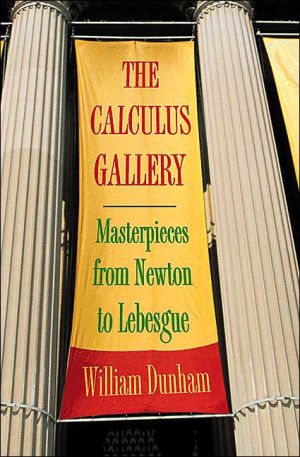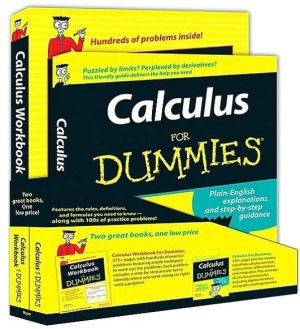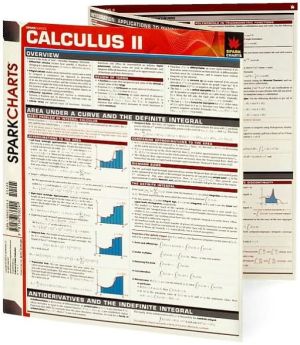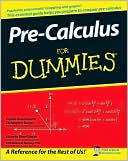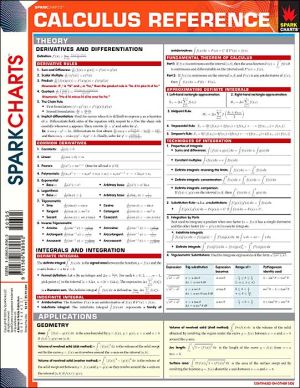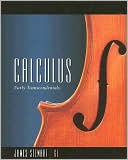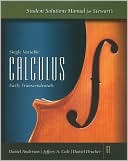The Calculus Gallery: Masterpieces from Newton to Lebesgue
More than three centuries after its creation, calculus remains a dazzling intellectual achievement and the gateway into higher mathematics. This book charts its growth and development by sampling from the work of some of its foremost practitioners, beginning with Isaac Newton and Gottfried Wilhelm Leibniz in the late seventeenth century and continuing to Henri Lebesgue at the dawn of the twentieth. William Dunham lucidly presents the definitions, theorems, and proofs. "Students of literature...
Search in google:
"The Calculus Gallery is one of the best efforts at mathematical exposition I have ever read! Dunham presents in detail and in his own words the sequence of ideas of classical giants of mathematics, but each new idea is described in modern terms and notation, so I had absolutely no trouble following along. Furthermore—and this is an astounding achievement—the entire work has a tightly woven development. If it were a detective story I would say it had a plot with no loose ends. An amazing feat. I wish I could plan a single lecture, never mind a course or a book, that well!"—Henry Pollak, Teachers College, Columbia University"What a fine resource! All of the famous functions that have shaped calculus and analysis parade before the reader in the original words of their creators. Bill Dunham has produced an excellent volume that teachers and students will enjoy and appreciate."—Thomas Banchoff, Brown University"Bill Dunham has done it again. The Calculus Gallery is a masterly journey through the works of thirteen mathematicians who formulated, formalised, and reformed the calculus into the modern analysis we learn today. Readers of his earlier books have learned to expect a clarity of exposition that few others can attain: they will not be disappointed."—Robin Wilson, author of Four Colors Suffice"This is an excellent book—an amazing mathematical page-turner. William Dunham has done the seemingly impossible: he has taken some difficult, advanced mathematics and, without sacrificing the technical details, written a lively, readable book about it."—Barry Cipra, author of Misteaks . . . and How to Find Them Before the Teacher Does"Pedagogically excellent and extremely well written, The Calculus Gallery bridges the gap between general histories and detailed studies of individual mathematicians. Dunham has described mathematical developments in an engaging style rarely found in literature of this kind."—Annette Imhausen, Trinity Hall, Cambridge"A welcome addition to the literature. The idea of presenting a 'museum of mathematics' is new. It allows the author to present a nonstandard selection of theorems, so that even mathematicians with a strong historical background will learn a few things."—Franz Lemmermeyer, Bilkent University, author of Reciprocity Laws: From Euler to Eisenstein Victor J. Katz - American Scientist [A] brilliant book. . . . I predict that Dunham's book will itself come to be considered a masterpiece in its field.
Ch. 1Newton5Ch. 2Leibniz20Ch. 3The Bernoullis35Ch. 4Euler52Ch. 5First interlude69Ch. 6Cauchy76Ch. 7Riemann96Ch. 8Liouville116Ch. 9Weierstrass128Ch. 10Second interlude149Ch. 11Cantor158Ch. 12Volterra170Ch. 13Baire183Ch. 14Lebesgue200
\ Zentralblatt MATH DatabaseA fascinating, competent visit too the calculus gallery.\ — Eberhard Knobloch\ \ \ \ \ Zentralblatt MATH\ A fascinating, competent visit too the calculus gallery.\ — Eberhard Knobloch\ \ \ Science\ - Judith V. Grabiner\ The Calculus Gallery is a wonderful book. The style is inviting; the explanations are clear and accessible. . . . Mathematicians, scientists, and historians alike can learn much that is interesting, much that is mathematically significant, and a good deal that is both.\ \ \ \ \ American Scientist\ - Victor J. Katz\ [A] brilliant book. . . . I predict that Dunham's book will itself come to be considered a masterpiece in its field.\ \ \ \ \ Mathematics Teacher\ - Diane M. Spresser\ A joy to read, The Calculus Gallery showcases one of the great intellectual pursuits of all time and, in the words of John von Neumann, 'the first achievement of modern mathematics.' Thirteen scholars, beginning with Newton and Leibniz, who gave birth to calculus in the seventeenth century, are featured in this sequential development of the important ideas that shaped calculus as we know it and gave rise to modern analysis. . . . [I]t is a lovely and engaging gallery of the 'masters' that belongs in the library of everyone who seriously teaches or studies the subject.\ \ \ \ \ Zentralblatt MATH\ - Eberhard Knobloch\ A fascinating, competent visit too the calculus gallery.\ \ \ \ \ ScienceThe Calculus Gallery is a wonderful book. The style is inviting; the explanations are clear and accessible. . . . Mathematicians, scientists, and historians alike can learn much that is interesting, much that is mathematically significant, and a good deal that is both.\ — Judith V. Grabiner\ \ \ \ \ American Scientist[A] brilliant book. . . . I predict that Dunham's book will itself come to be considered a masterpiece in its field.\ — Victor J. Katz\ \ \ \ \ ChoiceWhat distinguishes this selection is it truly provides a history of mathematics, not just a history of mathematicians. . . . If a better historical treatment of the development of the calculus is available, this reviewer has yet to see it. . . . Essential.\ \ \ \ \ Mathematics TeacherA joy to read, The Calculus Gallery showcases one of the great intellectual pursuits of all time and, in the words of John von Neumann, 'the first achievement of modern mathematics.' Thirteen scholars, beginning with Newton and Leibniz, who gave birth to calculus in the seventeenth century, are featured in this sequential development of the important ideas that shaped calculus as we know it and gave rise to modern analysis. . . . [I]t is a lovely and engaging gallery of the 'masters' that belongs in the library of everyone who seriously teaches or studies the subject.\ — Diane M. Spresser\ \
